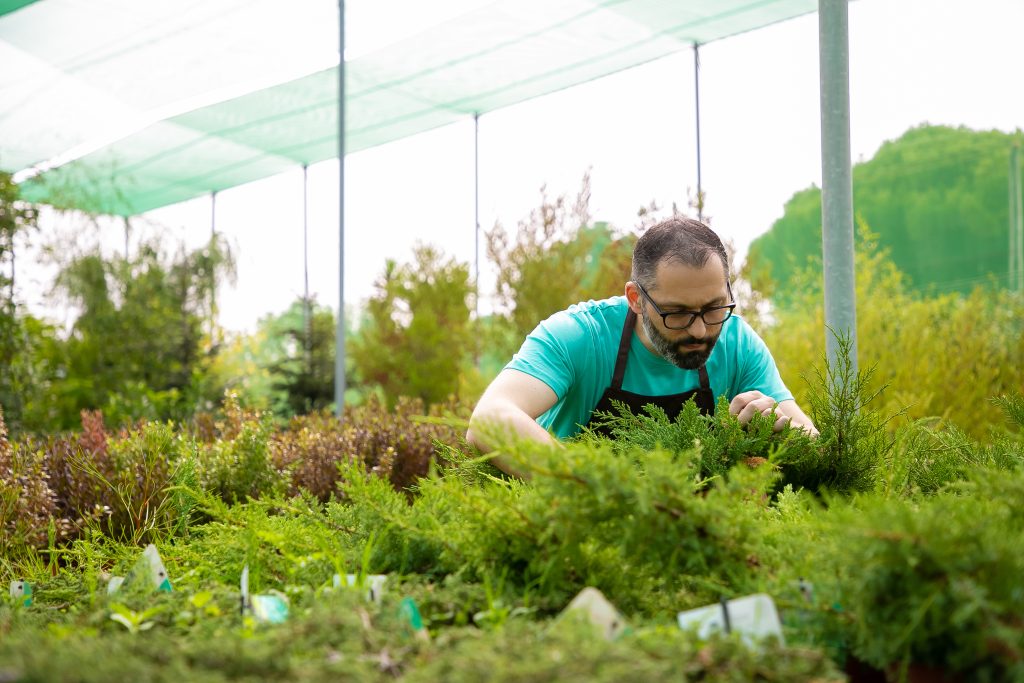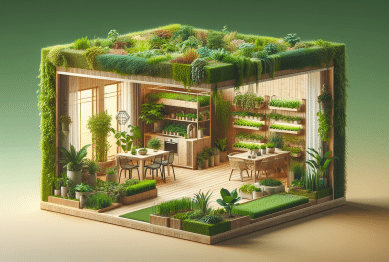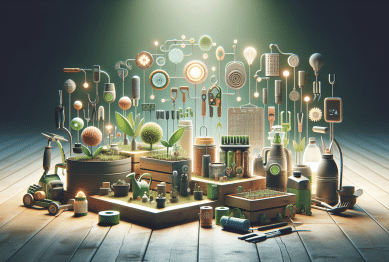Urban landscapes are transforming. Where parking lots, fire escapes, and window sills once sat unused, leafy greens and tomato vines now grow. How urban farming is taking root in small spaces is a trend that’s reshaping not only food systems but also how city dwellers connect with nature, nutrition, and sustainability.
In 2024, urban farming isn’t just a niche hobby. It’s a movement powered by rising food costs, climate awareness, and the need for more self-sufficient lifestyles. Whether you have a balcony, rooftop, or even a windowsill, growing your own food has never been more accessible—or more urgent.

Why Urban Farming Is Growing—Literally
Urban farming is gaining momentum for a few key reasons:
- Inflation and food insecurity: The cost of groceries continues to rise, pushing consumers to explore alternatives.
- Climate concerns: Growing food locally reduces carbon emissions tied to transportation and packaging.
- Mental health and lifestyle: Gardening has proven benefits for stress reduction and cognitive focus.
According to the U.S. Department of Agriculture, more than 15% of the world’s food is now grown in urban areas—a figure expected to increase as more people migrate to cities (USDA, 2023).
How Urban Farming Is Taking Root in Small Spaces
The Shift Toward Vertical and Micro-Gardening
In small urban homes, traditional gardens are often impossible. This has led to innovations in vertical farming, container gardening, and hydroponic systems that allow anyone to grow food in limited square footage.
Common examples include:
- Balcony trellises for tomatoes or beans
- Wall-mounted planters for herbs and lettuce
- Hydroponic towers that require no soil
- Stackable containers for root vegetables like radishes and carrots
These systems require minimal space and water while maximizing yield—a crucial factor for sustainable city living.
Rooftop Farms and Community Projects
Cities like New York, Chicago, and Toronto have seen a spike in rooftop farming initiatives. These community-led farms repurpose underused urban spaces into productive growing zones.
For instance, Brooklyn Grange, one of the world’s largest rooftop soil farms, produces over 50,000 pounds of organic produce annually right above city streets (Brooklyn Grange, 2024). These farms provide local food, educational programs, and green jobs—all while reducing urban heat island effects.
The Benefits of Urban Farming in Small Spaces
1. Food Security in Uncertain Times
As global food supply chains become more fragile, having even a small personal food source builds resilience. Herbs, leafy greens, and tomatoes can thrive in containers, giving you access to fresh ingredients regardless of market conditions.
2. Mental Health and Routine
The act of growing something—even a few herbs—can bring structure and calm. Studies show that people who garden report lower rates of anxiety and depression, particularly in urban settings (Soga et al., 2017).
3. Environmental Impact
Urban farming minimizes the distance food travels, cutting emissions. Additionally, growing without chemicals or plastic packaging supports a more sustainable lifestyle.
Tools and Techniques for Small-Space Urban Farming
If you’re wondering where to start, here are some beginner-friendly tools and methods to support your small-space setup:
Low-Tech, High-Yield Ideas
- Self-watering planters: Reduce the risk of over/underwatering
- Grow bags: Lightweight and easy to move
- Hanging baskets: Perfect for balconies and windows
- Mason jar hydroponics: Aesthetic and functional for small herbs
Smart Tech for Urban Growers
Apps and devices are making urban farming more efficient:
- Plant sensors: Tools like Edyn or Xiaomi monitor moisture, light, and nutrients
- Gardening apps: Tools like From Seed to Spoon help track planting schedules
- Smart indoor gardens: Systems like Click & Grow offer plug-and-play growing for tight spaces
These options make urban farming not only possible but manageable for busy schedules.
Challenges and How to Overcome Urban Farming
Urban farming isn’t without obstacles. But most can be addressed with planning and creativity.
1. Limited Sunlight
Use LED grow lights to supplement natural light indoors or in shaded areas.
2. Pests in Compact Environments
Opt for companion planting (like basil with tomatoes) to naturally deter insects.
3. Watering Constraints
Install drip irrigation kits or use self-watering planters that retain moisture longer.
The Cultural Impact of Urban Farming
More than a food trend, urban farming is becoming a social and cultural movement. On platforms like TikTok and Instagram, urban growers are sharing harvests, tips, and transformations of their once-empty balconies. The hashtag #urbangardening has over 2 billion views.
Schools, senior centers, and apartment complexes are adopting community gardening programs not just for food—but to teach sustainability, encourage wellness, and foster collaboration.
Final Thoughts
Understanding how urban farming is taking root in small spaces reveals more than a trend—it’s a response to the modern city lifestyle. Whether you’re growing lettuce in a recycled crate or tending basil in your kitchen, you’re part of a wider movement redefining what it means to eat, live, and think sustainably in urban spaces.
As the tools become smarter and the need more urgent, the message is clear: you don’t need land to farm—just intention, creativity, and a little space.
References
- United States Department of Agriculture (USDA). (2023). Urban Agriculture Toolkit. https://www.nrcs.usda.gov/sites/default/files/2022-10/USDA-UrbanAg-Toolkit.pdf
- Brooklyn Grange. (2024). Annual Impact Report. https://www.brooklyngrangefarm.com/sustainability
- Soga, M., Gaston, K. J., & Yamaura, Y. (2017). ‘Gardening is beneficial for health: A meta-analysis’. Preventive Medicine Reports, 5, 92–99. https://pubmed.ncbi.nlm.nih.gov/27981022/









